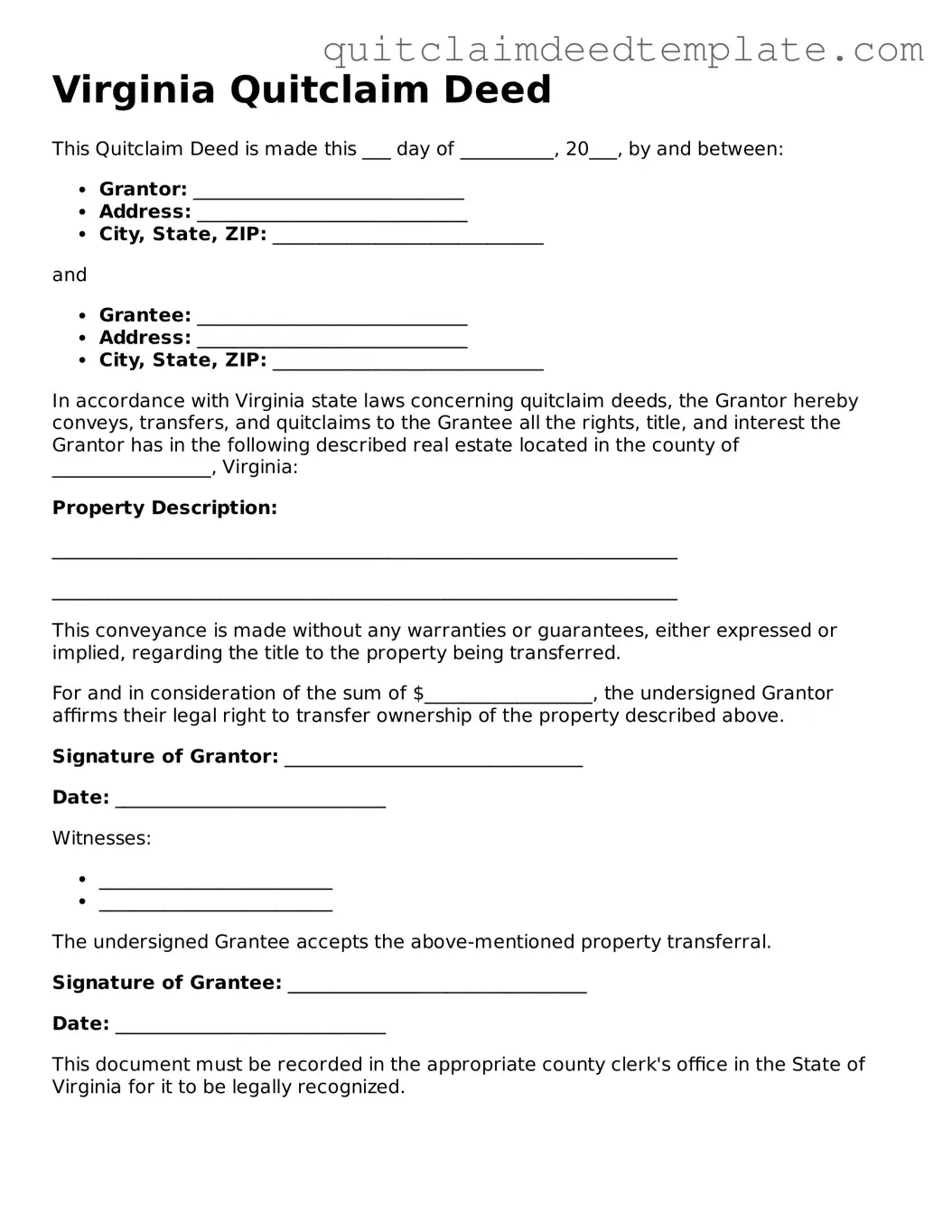What is a Quitclaim Deed in Virginia?
A Quitclaim Deed is a legal document used to transfer ownership of real estate from one person to another. In Virginia, this type of deed does not guarantee that the property is free of liens or other claims. Instead, it simply conveys whatever interest the grantor has in the property, if any.
When should I use a Quitclaim Deed?
You might consider using a Quitclaim Deed in situations such as transferring property between family members, adding or removing a spouse from a title after marriage or divorce, or clearing up title issues. It is often used when the parties know each other well and trust each other.
How do I fill out a Quitclaim Deed in Virginia?
To fill out a Quitclaim Deed, you will need to provide the names of the grantor (the person transferring the property) and the grantee (the person receiving the property). You must also include a description of the property being transferred, which can usually be found in the original deed or a property tax record. Ensure that all information is accurate and complete.
Do I need a notary for a Quitclaim Deed?
Yes, in Virginia, a Quitclaim Deed must be signed in the presence of a notary public. The notary will verify the identities of the signers and witness the signing of the document. This step is crucial for the deed to be legally valid.
Is a Quitclaim Deed the same as a Warranty Deed?
No, a Quitclaim Deed is not the same as a Warranty Deed. A Warranty Deed provides a guarantee that the grantor holds clear title to the property and has the right to transfer it. In contrast, a Quitclaim Deed offers no such guarantees and only transfers whatever interest the grantor may have.
What are the tax implications of using a Quitclaim Deed?
Generally, transferring property via a Quitclaim Deed may not trigger a tax event, but this can depend on various factors, including the value of the property and the relationship between the parties. It is advisable to consult with a tax professional or attorney to understand any potential tax implications.
How do I record a Quitclaim Deed in Virginia?
To record a Quitclaim Deed, you must take the signed and notarized document to the local circuit court clerk's office in the county or city where the property is located. There may be a small fee for recording the deed. Once recorded, the deed becomes part of the public record.
Can a Quitclaim Deed be revoked?
Once a Quitclaim Deed is executed and recorded, it cannot be revoked unilaterally. However, the parties involved may choose to execute another deed to reverse the transaction or clarify ownership. Legal advice may be necessary in such cases.
What happens if there are liens on the property?
A Quitclaim Deed does not remove any liens or encumbrances on the property. If there are existing liens, the grantee may inherit those obligations. It is important to conduct a title search before transferring property to understand any potential issues.
Do I need an attorney to prepare a Quitclaim Deed?
While it is not legally required to have an attorney prepare a Quitclaim Deed, it is often beneficial. An attorney can help ensure that the deed is completed correctly, that all necessary information is included, and that you understand the implications of the transfer.
